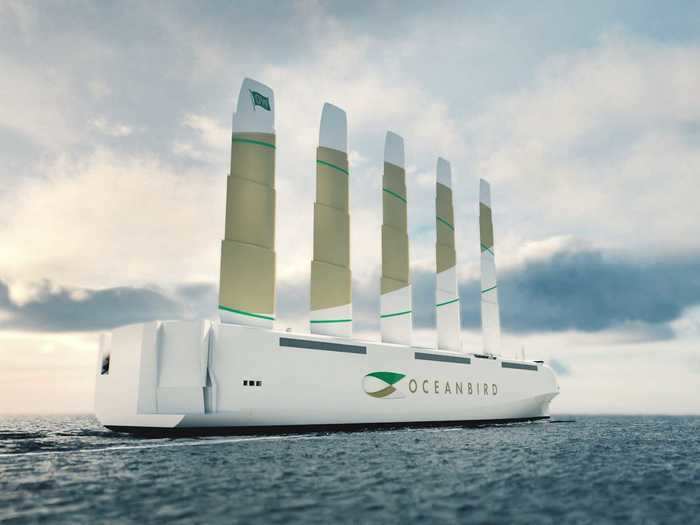
Oceanbird rendering.Wallenius Marine
Cargo ships carry around 90% of global trade — roughly 11 billion tons of goods each year — and contribute mightily to global greenhouse-gas emissions. But one Swedish company is looking to make shipping a bit more sustainable with a new breed of emission-free vessels.
Shipbuilder Wallenius Marine teamed up with Stockholm's Royal Institute of Technology, maritime consultancy SSPA, and the Swedish Transportation Administration to design a new type of cargo ship that's far more ecologically friendly than the diesel-powered vessels on the seas today. The result of that partnership is Oceanbird, a cargo-ship concept that's pulled along by gigantic wing-like sails.
Wallenius claims Oceanbird will be able to carry 7,000 cars and be 90% more efficient than other ocean-going vessels. The trade-off, however, is that Oceanbird will take around 12 days to cross the Atlantic, whereas traditional ships currently make the journey in about eight.
Learn a bit more about the green cargo ship below.







 I quit McKinsey after 1.5 years. I was making over $200k but my mental health was shattered.
I quit McKinsey after 1.5 years. I was making over $200k but my mental health was shattered. Some Tesla factory workers realized they were laid off when security scanned their badges and sent them back on shuttles, sources say
Some Tesla factory workers realized they were laid off when security scanned their badges and sent them back on shuttles, sources say I tutor the children of some of Dubai's richest people. One of them paid me $3,000 to do his homework.
I tutor the children of some of Dubai's richest people. One of them paid me $3,000 to do his homework. Why are so many elite coaches moving to Western countries?
Why are so many elite coaches moving to Western countries?
 Global GDP to face a 19% decline by 2050 due to climate change, study projects
Global GDP to face a 19% decline by 2050 due to climate change, study projects
 5 things to keep in mind before taking a personal loan
5 things to keep in mind before taking a personal loan

Copyright © 2024. Times Internet Limited. All rights reserved.For reprint rights. Times Syndication Service.